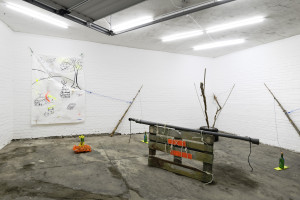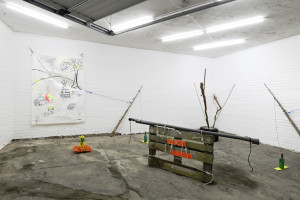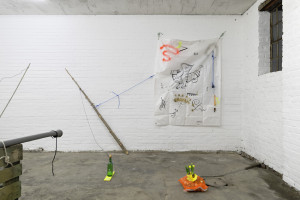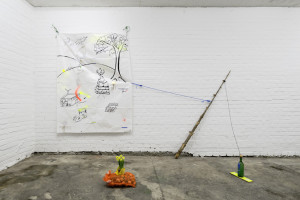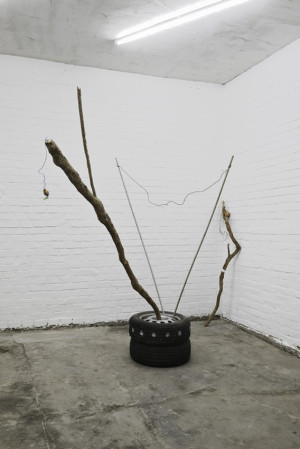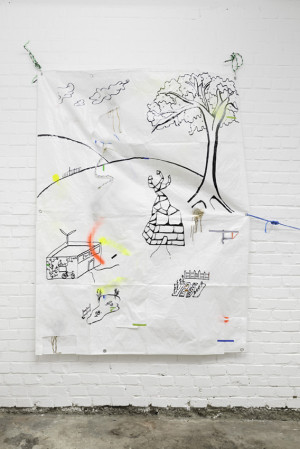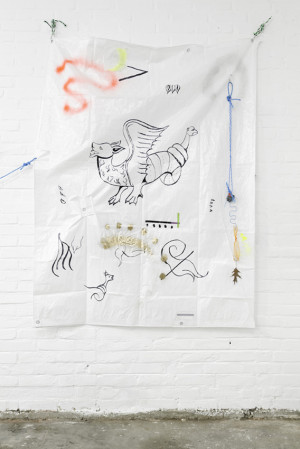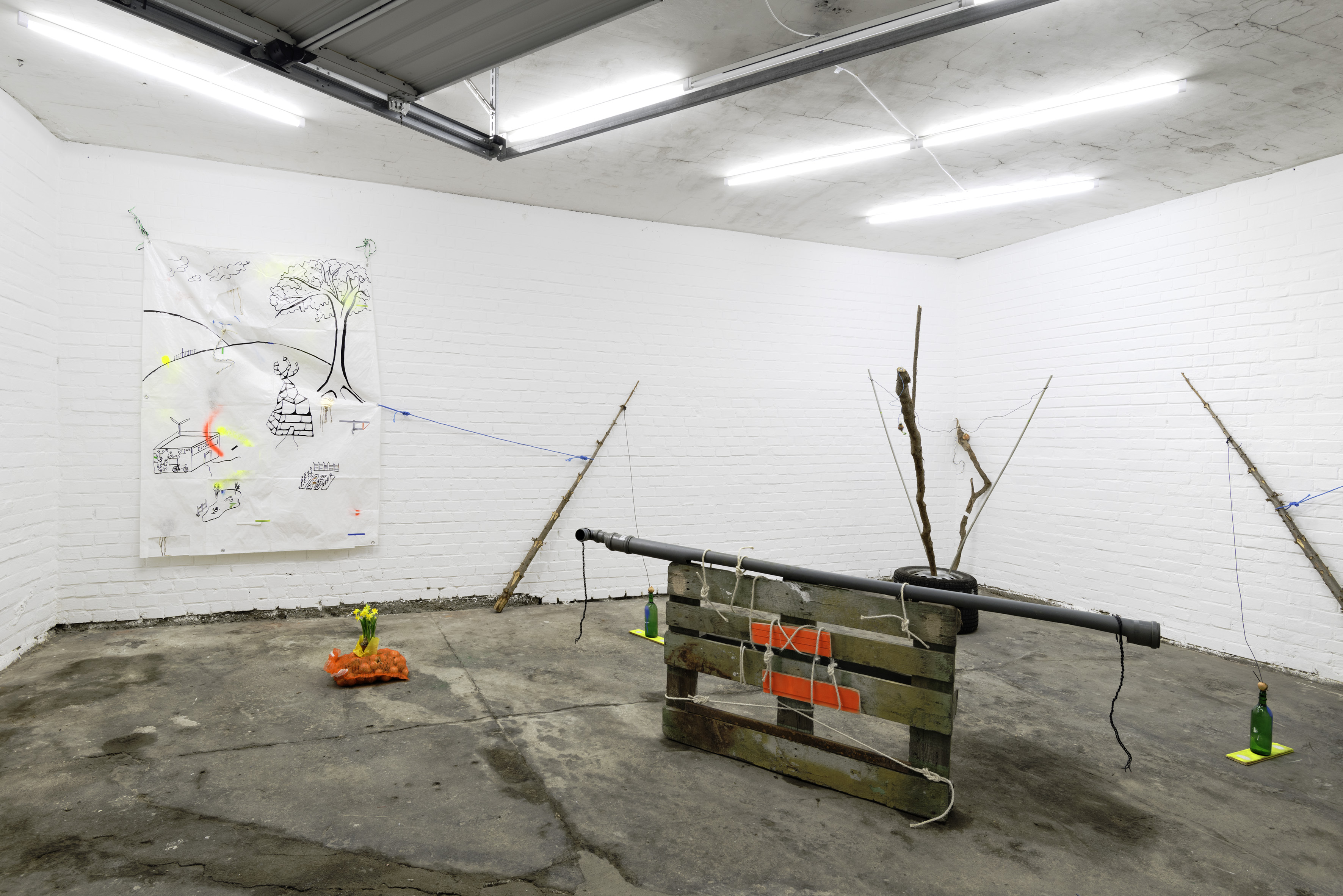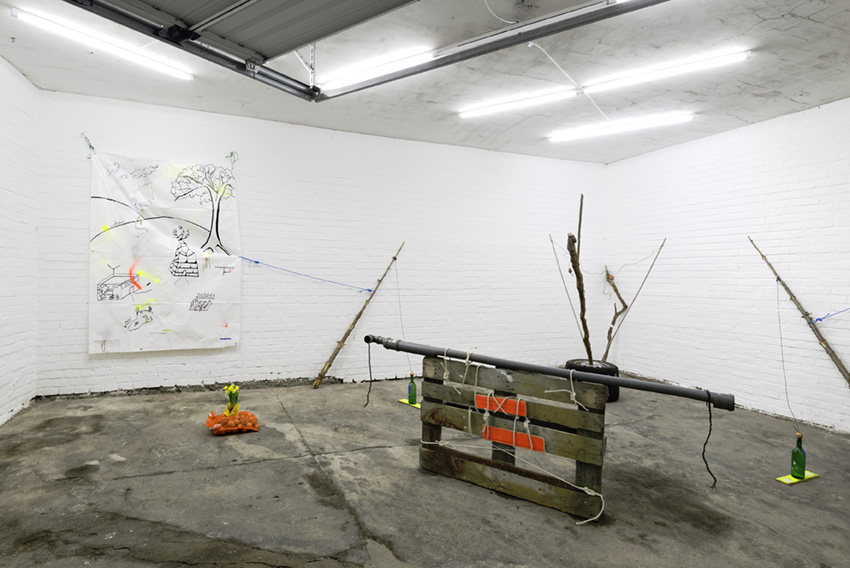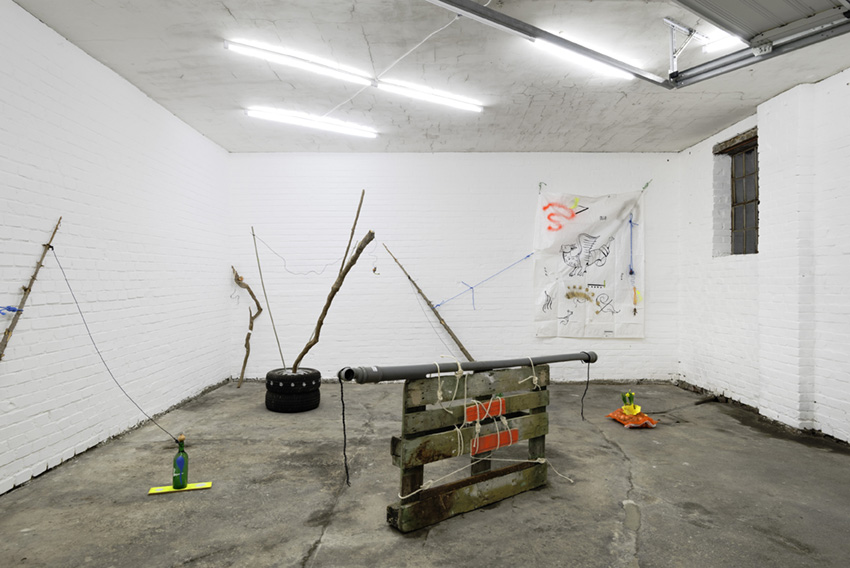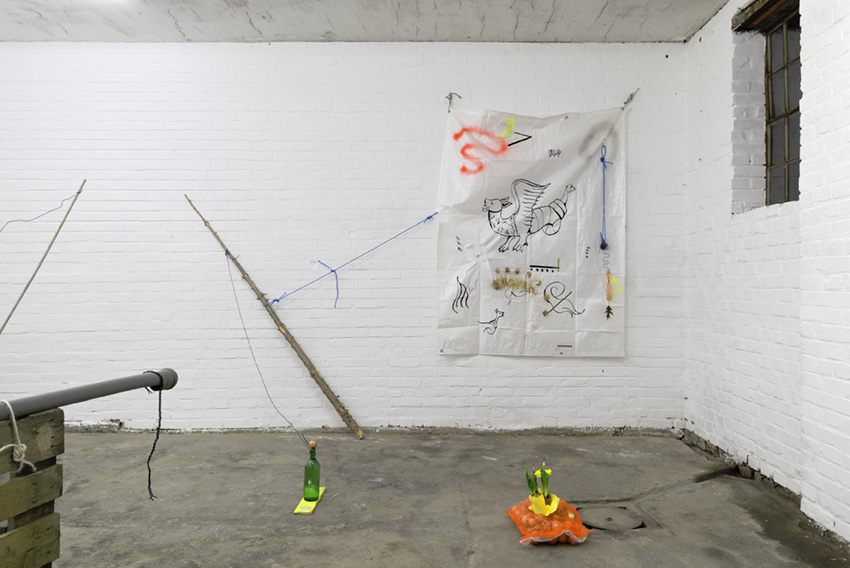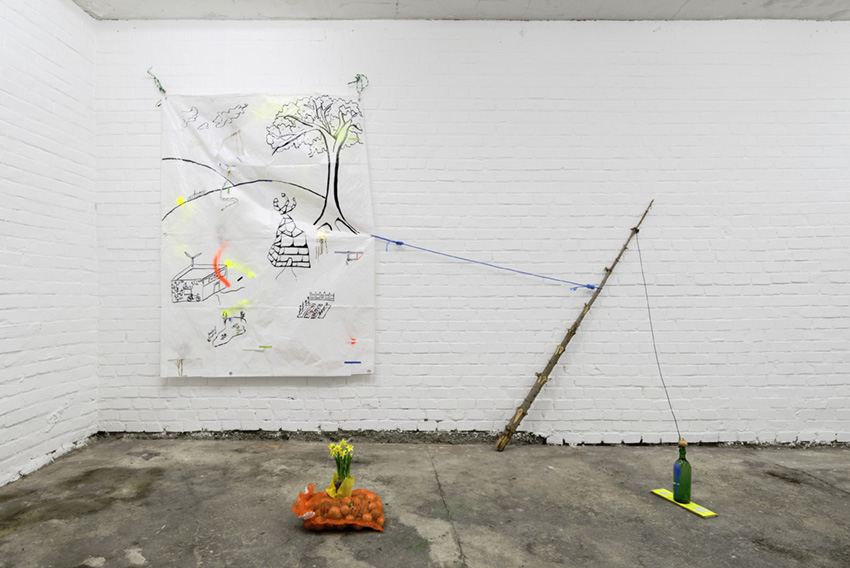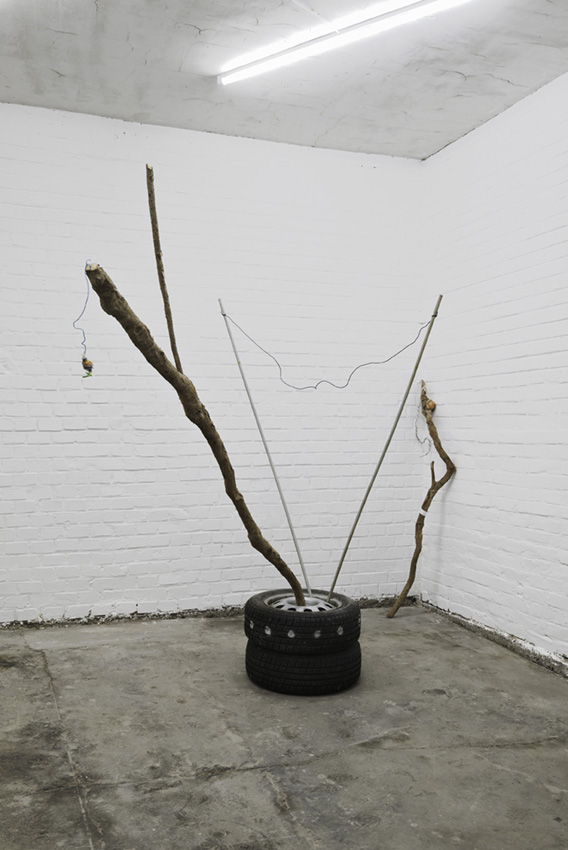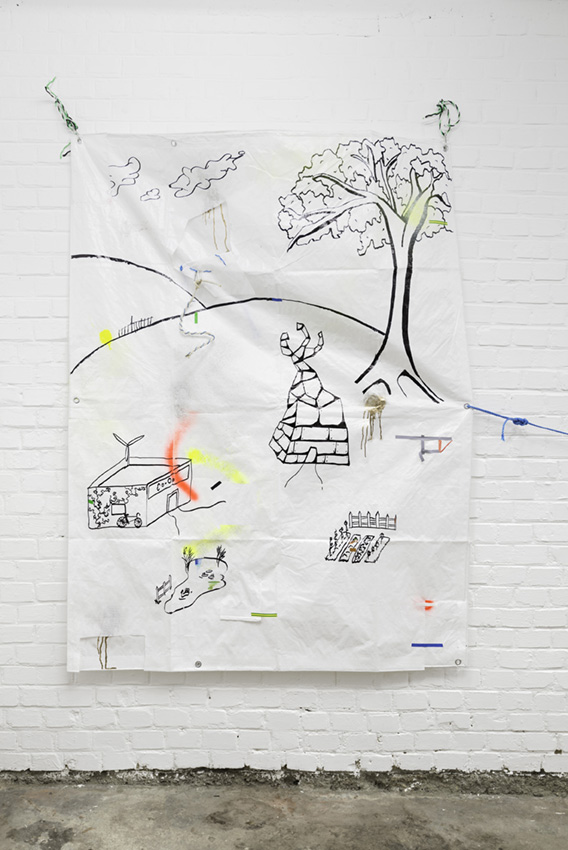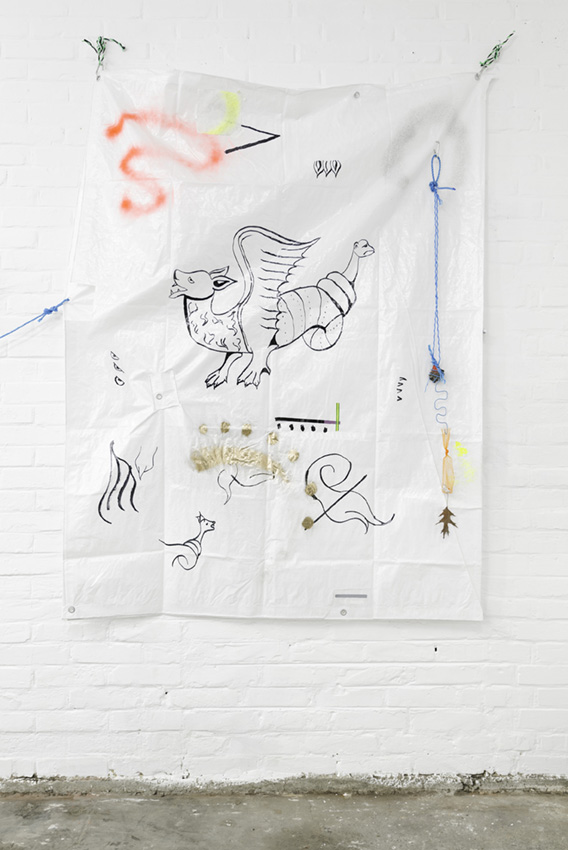Kevin Space is thrilled to present nothing is the end of the world they made, a solo exhibition of its first Artist-in-Residence, London based artist and writer Caspar Heinemann, setting out to transform the space into a matrix that deconstructs and re-imagines unstable notions of future and alternative as much as the structure that enables them. In a carefully balanced yet fragile structure, Heinemann has placed multiple traces of material and semiotic references, found objects from the garage in the former butchery and histories, interwoven in a conflation and struggle of fantastic and real, material and immaterial relations, that aim to unsettle signifiers, metaphors, and representations shaping the scope of the possible.
Staging a network of forests and roads, the installation in the lower space is connected through wires and strings, holding two large paintings on plastic tarpaulins made with marker pen, spray and tape, reminiscent of DIY punk and protest culture and placed symmetrically on diagonal walls. While one of the paintings depicts a scene in the countryside – a treehouse, a pond, and a vegetable pad grounded in the artist’s childhood imaginary of what utopia might look and feel like –, the opposite one sketches snippets and shapes of a fantastic dragon. Referring to (failed) protest culture in the UK in the 1990s that once aimed to stop roads from being built and autonomous life from being made unsustainable, the dragon here performs its existence as totem of this wave of resistance, as much as its role as mythological creature that once taught humans language.
Within this fluidity of overlayering and crossing experiences and references, nothing is the end of the world they made seeks to explore structural limits and violence of language (as they made it) onto bodies while fostering its potentiality as tool of resistance. The vegetable fields of the childish dream as force, transgressing into a field of wood and onions (for their part both standing for self-governing cultivation and an ancient means for fortune telling), likewise inhabit this mutual reinforcement of the material and immaterial, body and mind, politics and mystification to test out capacities to open up third, queer, spaces of unrealizable representation and affective semiotics; when childhood fantasy, mysticism, and constantly actualising bodies team up to create a treehouse stopping the road from its path of destruction, and urging a future that we are unwilling or unable to imagine.
Within the contested field between utopia and failure, fantasy and reality, humor and severity, then arises the urge to set free the mythological figure of the dragon from metaphor and prevailing ideas of utopia from the impossible to challenge the epistemological limits of our current political vision.

